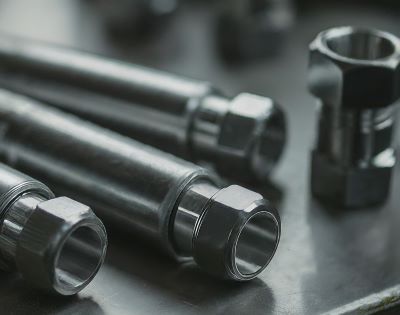Those unassuming nuts and ferrules you encounter everywhere, from your faucet to your bookshelf, play a vital role in keeping things together – literally. But what happens when these essential components get loose or damaged?
Leaks, electrical issues, and even structural problems can arise. That’s where the concept of the “Nut and Ferrule: The Ultimate Quick Fix” comes in.
The Problem: Loose or Damaged Nuts and Ferrules
Nuts and ferrules can become compromised in several ways. Over time, wear and tear can loosen them. Vibrations from machinery or constant movement can also cause them to come undone. Perhaps the most common culprit is simply improper installation in the first place.
The consequences of loose or damaged nuts and ferrules can range from inconvenient to downright dangerous. A leaky pipe under your sink can quickly turn into a major plumbing issue. Loose electrical connections pose a fire hazard. In critical applications, faulty nuts and ferrules can even lead to structural failures.
The Solution: The Power of Nuts and Ferrules
The good news is that properly tightened and undamaged nuts and ferrules can prevent all these problems. These workhorses come in various shapes and sizes, each suited for a specific application. Using the right nut and ferrule for the job is crucial. For instance, a locknut designed for enduring vibrations might be overkill for a simple bookshelf bolt.
The Quick Fix: How to Tighten or Replace a Nut and Ferrule
Tightening a Loose Nut or Ferrule:
➡️ Gather your tools: You’ll need a wrench or pliers that fit the size of the nut or ferrule. Adjustable wrenches are handy for various tasks.
➡️ Grip the nut or ferrule firmly: Apply steady pressure to ensure a good grip and avoid rounding off the edges.
➡️ Turn in the tightening direction: Typically, this is clockwise. Be careful not to overtighten, as this can damage the threads or the component itself.
Replacing a Damaged Nut or Ferrule:
➡️ Turn off the water supply or electrical power (if applicable) for safety reasons.
➡️ Use the appropriate wrench or pliers to loosen and remove the damaged nut or ferrule.
➡️ Carefully dispose of the damaged component.
➡️ Replace with a new nut and ferrule of the same type and size.
➡️ Tighten securely following the steps mentioned earlier.
Remember: If you’re unsure about any part of the process, it’s always best to consult a qualified professional.
Safety Precautions
Safety first! When working with nuts and ferrules, keep these precautions in mind:
➡️ Use the right tool for the job. A loose wrench can slip and cause injury.
➡️ Turn off the power supply for electrical applications to avoid shocks.
➡️ Be mindful of sharp edges and wear gloves if necessary.
Conclusion
Nuts and ferrules are the unsung heroes of everyday functionality. By keeping them properly tightened and replacing them when necessary, you can prevent a whole lot of headaches (and potential damage) down the line.
Remember to inspect your nuts and ferrules regularly and perform any tightening or replacements as needed. With a little attention, these tiny components can ensure a lot of smooth sailing.
Post time: Jul-01-2024


